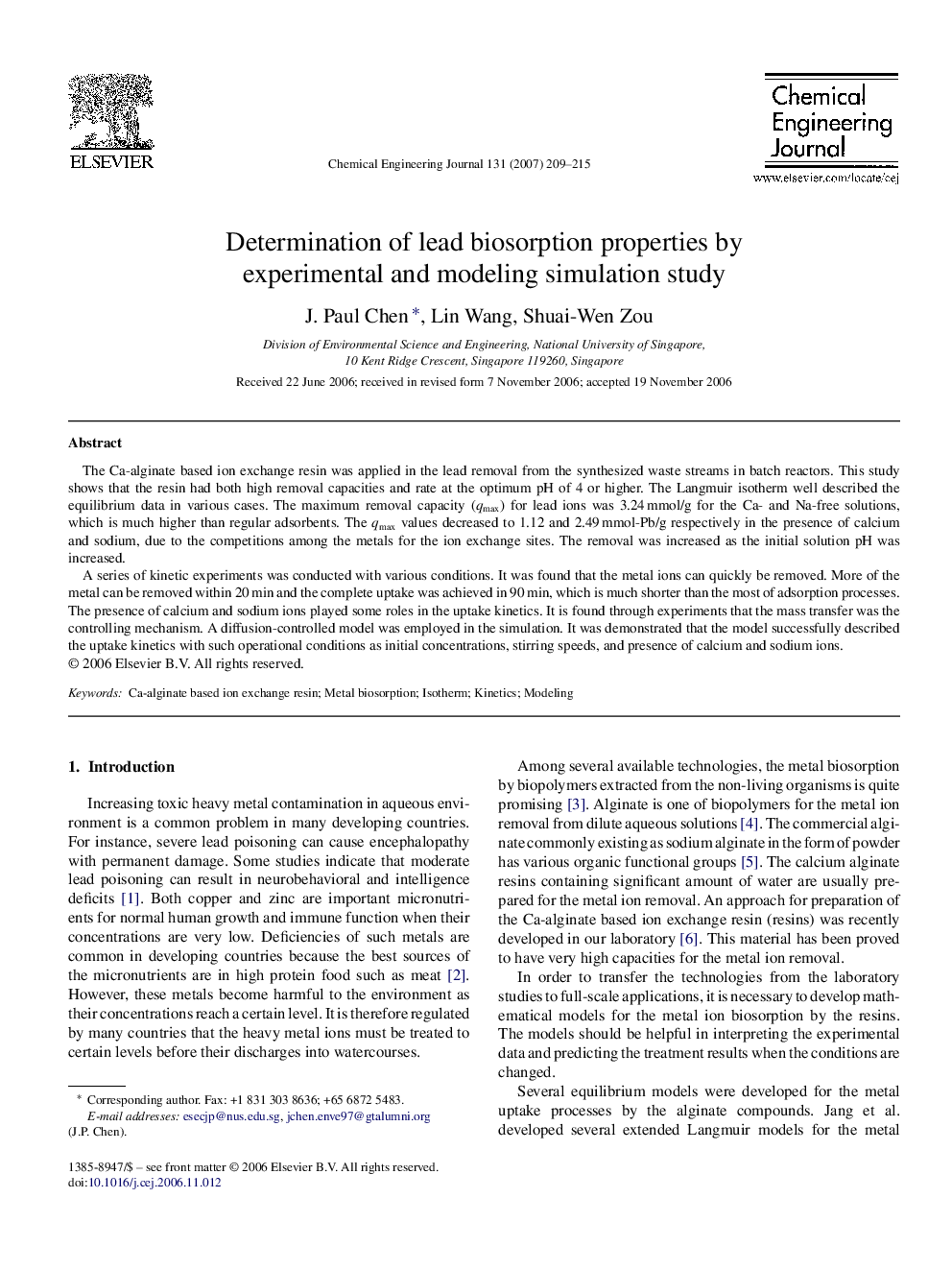| Article ID | Journal | Published Year | Pages | File Type |
|---|---|---|---|---|
| 153950 | Chemical Engineering Journal | 2007 | 7 Pages |
The Ca-alginate based ion exchange resin was applied in the lead removal from the synthesized waste streams in batch reactors. This study shows that the resin had both high removal capacities and rate at the optimum pH of 4 or higher. The Langmuir isotherm well described the equilibrium data in various cases. The maximum removal capacity (qmax) for lead ions was 3.24 mmol/g for the Ca- and Na-free solutions, which is much higher than regular adsorbents. The qmax values decreased to 1.12 and 2.49 mmol-Pb/g respectively in the presence of calcium and sodium, due to the competitions among the metals for the ion exchange sites. The removal was increased as the initial solution pH was increased.A series of kinetic experiments was conducted with various conditions. It was found that the metal ions can quickly be removed. More of the metal can be removed within 20 min and the complete uptake was achieved in 90 min, which is much shorter than the most of adsorption processes. The presence of calcium and sodium ions played some roles in the uptake kinetics. It is found through experiments that the mass transfer was the controlling mechanism. A diffusion-controlled model was employed in the simulation. It was demonstrated that the model successfully described the uptake kinetics with such operational conditions as initial concentrations, stirring speeds, and presence of calcium and sodium ions.
